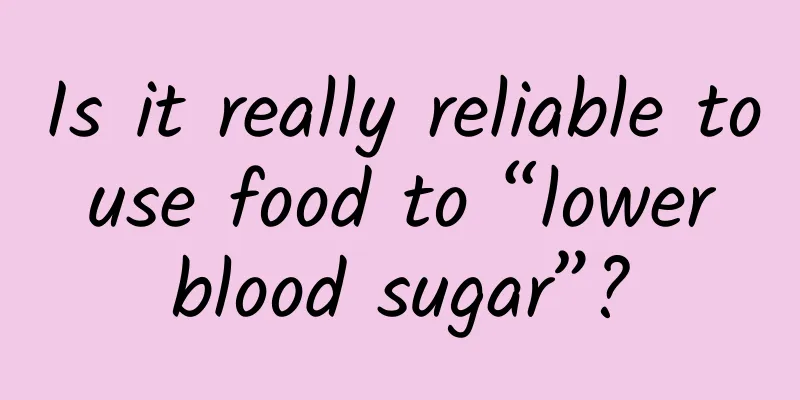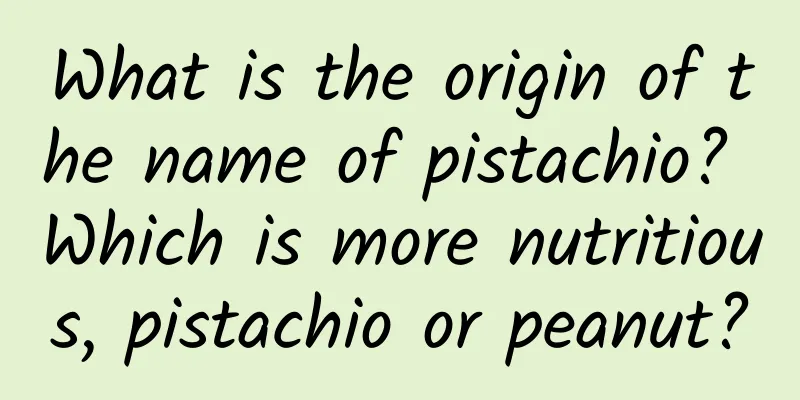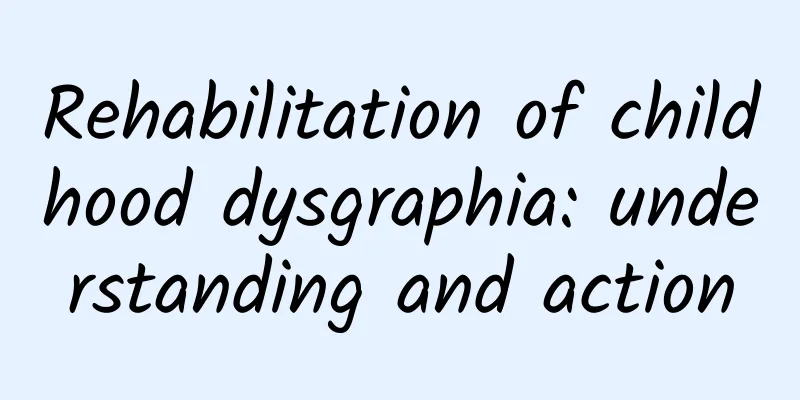Is it really reliable to use food to “lower blood sugar”?

|
As people's living standards continue to improve, the incidence of diabetes is also increasing year by year, and it is showing a trend of younger people. According to statistics, the current prevalence of diabetes in adults in my country is 11.6%, and the number of patients has reached 114 million, making it the country with the largest number of diabetes in the world. Diabetes is a group of metabolic diseases characterized by high blood sugar, which is caused by defects in insulin secretion or its impaired biological function, or both. In order to lower blood sugar, many diabetic patients believe rumors such as "bitter melon can lower blood sugar, corn silk tea can lower blood sugar, pumpkin can lower blood sugar", and try to use food to lower blood sugar. So, is it really reliable to "lower blood sugar" with food? No. 1: Bitter Melon When it comes to "blood sugar lowering" vegetables, bitter melon is second to none and is a well-known "blood sugar lowering star". Bitter melon contains a unique bitter melon saponin, which has the effect of assisting in lowering blood sugar. However, the extraction process of bitter melon saponin is extremely complicated. Scientists need special instruments and environments to complete it, and the extract must reach a certain concentration to have an effect similar to insulin; and the method of use is similar to insulin, both of which are hypoglycemic through subcutaneous injection, intraperitoneal injection, etc., and cannot be directly administered orally, otherwise it will be quickly metabolized and decomposed by the digestive enzymes in the gastrointestinal tract. This is the same reason why insulin cannot be taken orally and needs to be administered subcutaneously. Therefore, eating bitter melon cannot play a role in lowering blood sugar. Do not trust the so-called "eat more bitter melon" and bitter melon health products and foods on the market that claim to "rapidly lower blood sugar" and "replace insulin". Otherwise, it will not only fail to lower blood sugar, but may also aggravate the condition. NO.2: Pumpkin It has been said for a long time that eating more pumpkin can lower blood sugar. It is said that pumpkin polysaccharides contained in pumpkin have a certain inhibitory effect on blood lipids, blood sugar and blood pressure. However, the content of pumpkin polysaccharides in pumpkin is very low. If you rely on eating pumpkin to lower blood sugar, it will have almost no effect. Not only that, pumpkin also contains a certain amount of soluble sugar, among which glucose and sucrose are sugars that can be quickly absorbed by the human body. The glycemic index of pumpkin is 75, which is a high glycemic index food and is not suitable for diabetic patients. Relevant studies have shown that pumpkin not only cannot lower blood sugar, but excessive consumption can cause blood sugar to rise rapidly. Especially the sweet and sticky chestnut pumpkin, which will cause blood sugar to rise faster after consumption. If you want to eat pumpkin, you can choose tender pumpkins with a lighter taste, less sugar content, and crisper texture as vegetables, and pay attention to reducing staple foods. For example, if you eat a 200-gram pumpkin, you should eat less than half a bowl of rice (about 50 to 80 grams). NO.3: Okra Okra is a food with low sugar content and rich in soluble dietary fiber, and is also a highly recommended blood sugar-lowering food. However, it is impossible to achieve a blood sugar-lowering effect by eating okra. Studies have shown that okra extract, okrain, has a certain effect on treating diabetes and diabetic nephropathy in experimental animals. However, these studies were almost all conducted on experimental animals after extraction and concentration, and there is no human evidence yet. There is a huge gap between animal research and human research, and the dosage used in animal research is also large, so it is difficult for people to reach the effective dose through normal diet. Therefore, don’t think that eating a few okra can lower blood sugar. In clinic, some patients heard that okra can lower blood sugar, and they soaked okra in water and drank it every day, and even stopped taking medicine, but their blood sugar did not go down but rose. NO.4: Corn Corn is also often regarded as a "sugar-lowering star" and is highly sought after. Corn is rich in unsaturated fatty acids, especially linoleic acid, which has a content of more than 60%. It works synergistically with vitamin E in corn germ to effectively reduce blood cholesterol concentration and prevent it from depositing on the blood vessel wall. But it is not true that corn can lower blood sugar. Although corn contains more magnesium and glutathione, which can improve insulin resistance, it does not increase the efficacy of insulin, let alone lower blood sugar. In fact, corn contains a lot of carbohydrates and more sugar, and sweet corn has a higher sugar content. Corn is a high-glycemic index food with a GI value of 70. The monosaccharide components such as glucose in corn are not only high in content, but also easily digested and absorbed. After eating, blood sugar rises much faster than other grains. In addition, the calories of corn are higher than flour, rice and sorghum. If you eat corn frequently and in large quantities, your blood sugar level will not only not decrease, but will increase. NO.5: Buckwheat Buckwheat contains a substance called rutin. Scientists have found that rutin can regulate the activity of insulin and may help lower blood sugar. However, this research is currently at the animal experiment stage, and there is no evidence that rutin has a real effect on lowering blood sugar. Moreover, the rutin content in buckwheat is very small, and it is impossible for people to eat enough to have an effect. There is also a saying that buckwheat is rich in chromium and can help lower blood sugar, so buckwheat is called "blood sugar lowering grain". This is actually a misunderstanding. First of all, when chromium is deficient, supplementing chromium has a certain blood sugar lowering effect; but if there is no chromium deficiency, supplementing more chromium will not further lower blood sugar. Secondly, the chromium content of buckwheat is not very high. In fact, the bran and seed coat of many kinds of grain crops contain chromium, for example, wheat bran contains a lot of chromium. If you are deficient in chromium, eating more whole grains can help supplement chromium, and you don't have to eat buckwheat. Conclusion Foods that lower blood sugar are not reliable. In short, there are no foods that lower blood sugar or sugar-free foods in nature. No food has the effect of lowering blood sugar. On the contrary, all foods in nature can increase blood sugar after consumption. This is because any food contains calories, and the conversion of calories will cause blood sugar to rise. As we all know, food contains a variety of nutrients, of which the three major nutrients are carbohydrates, proteins and fats, and the rest include minerals, trace elements, vitamins, etc. After carbohydrates enter the human body, they will be directly broken down into glucose for human use. Therefore, any food will increase blood sugar, but the degree of increase is different. Some foods increase blood sugar quickly and highly; while some foods increase blood sugar slowly and low. The purpose of diet control for diabetics is to prevent blood sugar from rising too high or too fast after a meal. On the basis of calculating the total calories needed for the whole day, by choosing foods with a low glycemic index and a reasonable combination of various foods, the total blood sugar provided by each food does not exceed the blood sugar standard. In addition, regular and appropriate exercise and reasonable medication under the guidance of a doctor are required to achieve blood sugar control. Related links: GI values of common foods: barley grains (cooked) 25, black rice 42.3, sweet potatoes 54, sweet corn (cooked) 55, oats 55, buckwheat noodles 59.3, whole wheat bread 69, rice 83.2, glutinous rice 87, white wheat steamed bread 88.1, low-fat milk powder 11.9, konjac 17, soybeans 18, lentils 18.5, frozen tofu 22.3, milk 27, green beans 27, mung beans 27.2, lotus root starch 32.6, yogurt 36, green beans 39, fried potato chips 60.3, carrots 71, pumpkin 75, cherries 22, grapefruit 25, fresh peaches 28, pears 36, apples 36, plums 42, grapes 43, kiwi 52, bananas 53, mangos 55, pineapple 66, and watermelon 72. |
<<: When are pine nuts ripe? When is the best time to eat pine nuts?
>>: There are 3 ways to control myopia, one of which only requires “drug drops”?
Recommend
What was the battle that laid the foundation for the Three Kingdoms? When did the Kingdom of Shu fall in the Romance of the Three Kingdoms?
There are more than a thousand characters with na...
Will cervical erosion be cured by regular exercise?
Patients with cervical erosion need to go to the ...
Is it good for women to wash their faces with cold water in winter?
We all know a common sense that washing your face...
Will my breasts get smaller after breastfeeding?
Many female friends find that their breasts becom...
How to deal with fallopian tube pain?
In life, there are many women who experience fall...
You can’t just plant teeth casually? You may not know that there are conditions for dental implants.
Science Times reporter Wu Qiong Tooth extraction ...
Vagina itching during late pregnancy
After pregnancy, basically every part of the preg...
Things you can't eat during your period
What can’t you eat when you have your period? Men...
Why can’t I hold my urine after giving birth?
Urinary incontinence is a common occurrence in ch...
Can I keep a child if I have gestational hypertension?
During pregnancy, women's bodies are usually ...
What to do with virgin women's needs?
Sex is an unchangeable part of nature. Sex is div...
It’s true that your brain stops working! Thinking can also make you tired!
After finishing a day's work, modern workers ...
Suddenly standing up and seeing black in front of your eyes, is it anemia or low blood pressure? How to deal with it? The doctor explains it clearly
Many people may have experienced this situation: ...
Early progesterone standard comparison table
Most women certainly know how serious it is if th...
Causes of hematuria in women
Female friends often suffer from some common dise...









